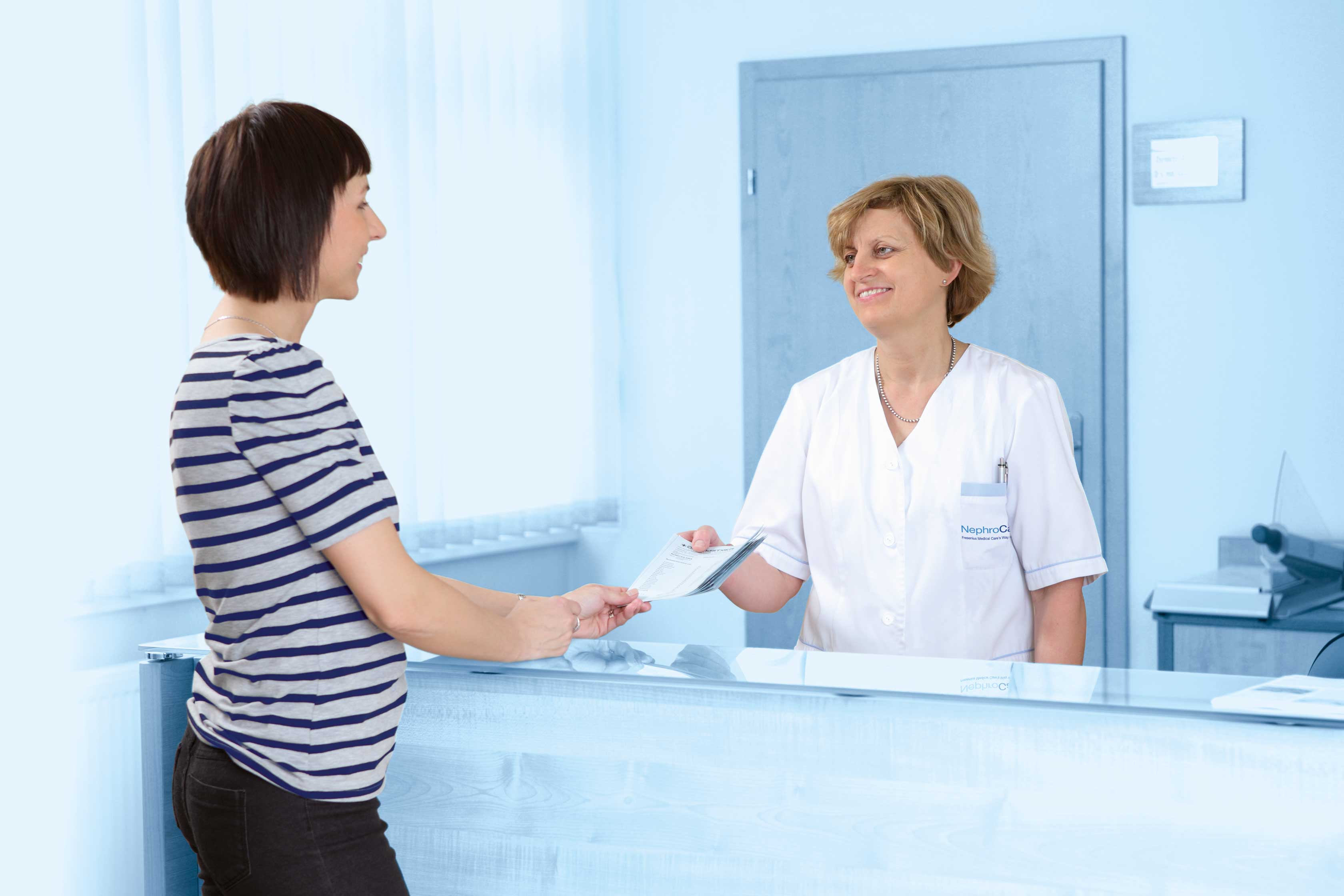Making the right decision

Perhaps you have already thought about how different parts of your everyday life might change as a result of dialysis treatment.
It is understandable if the idea of changes scares you at first. We have picked out a few aspects of daily life below, such as self-esteem, work, exercising, travel, mental health and socio-legal aspects.
You may find it reassuring to be well informed in advance; however, we cannot replace talking to your physician. Every decision needs to be made together with your physician. And always remember: your dialysis team is there for you if you get stuck and need more support.
Tips that may support choosing the right therapy
With these tips, we would like to support you on your path to finding the right therapy
Tip 1: Ask questions
Therapy will have a huge impact on your life. Do some research on therapy options, on this website as well as others and ask physicians, nurses, relatives, etc. questions
Tip 2: Involve your loved ones along the way
Your therapy will also affect your loved ones as well. Take them with you to physician's visits or patient meetings. Talk with your loved ones about the challenges of therapy and share your feelings.
Tip 3: Exchange ideas with your physician
Your physician is the first point of contact when choosing your therapy modality. Take advantage of the time you have with your physician and ask questions.
Tip 4: Exchange ideas with your care team
Your dialysis team in the dialysis centre has already gained a lot of experience with the therapies. Use this knowledge and exchange ideas. A talk with an experienced nurse may provide you with valuable insights.
Tip 5: Talk to people who are already being treated
People who are already being treated with kidney replacement therapy have already gained experience. They can share lot of information about each therapy. Ask your physician or dialysis team for contact information.
Tip 6: Take notes about what is important to you
Every therapy has advantages and disadvantages. Take notes about each therapy option and use them to help you decide. Your notes can be the basis for a discussion with your physician. Then talk to your physician about your therapy options and their advantages and disadvantages in a shared decision-making process.
Comparing different options
| CAPD | APD | Home Haemodialysis (HHD) | In-centre Haemodialysis (HD) |
|---|---|---|---|
| Three to five exchanges (each about 30 minutes) performed during the day by yourself or with the help of a caregiver | Typically performed every night (about eight hours) by yourself or with the help of a caregiver | Longer, shorter and more frequent or overnight treatments are possible in your home. Treatment is done by yourself or with the help of a caregiver | Typically performed three times a week at a dialysis unit for four to five hours per session |
| CAPD | APD | Home Haemodialysis (HHD) | In-centre Haemodialysis (HD) |
|---|---|---|---|
| Fewer but regular visits | Fewer but regular visits | Fewer but regular visits | Regular visits required, usually three times a week |
| CAPD | APD | Home Haemodialysis (HHD) | In-centre Haemodialysis (HD) |
|---|---|---|---|
|
|
|
|
| CAPD | APD | Home Haemodialysis (HHD) | In-centre Haemodialysis (HD) |
|---|---|---|---|
If the hygienic requirements are met, the bag exchange can also be carried out at the workplace or in a hotel room | May have less impact on your work during the day, since treatments are mainly performed at night |
|
|
| CAPD | APD | Home Haemodialysis (HHD) | In-centre haemodialysis (HD) |
|---|---|---|---|
|
| ||
| CAPD | APD | Home Haemodialysis (HHD) | In-centre Haemodialysis (HD) |
|---|---|---|---|
|
| ||
| CAPD | APD | Home Haemodialysis (HHD) | In-centre Haemodialysis (HD) |
|---|---|---|---|
| Typically not needed, as dialysis takes place via the peritoneal catheter. | Typically, two needle insertions per treatment with access via fistula/graft or via a catheter. | ||
Staying fit on dialysis

At first, almost everyone finds it difficult to motivate themselves to exercise regularly. There will also be additional limitations due to your chronic kidney disease. However, an appropriate amount of exercise can have a positive effect on body awareness, circulation and sleep rhythm.
As a dialysis patient, there are many ways to get involved in exercising. Perhaps you can find a sports partner with whom you can get and stay fit together? By doing so, you can do something good for your body through exercise and for your soul through conversation.
Be aware: before you start exercising, it is important that you talk with your physician about the different types of sports you would like to do and whether they would be appropriate options for you.
Exercising and peritoneal dialysis
The types of sport and exercise you can do with peritoneal dialysis are largely influenced by the following factors:
- Your general health
- The condition of your catheter exit site
- The amount of fluid that remains in the abdominal cavity during treatment
As a PD patient, you should avoid sports that could put pressure on your abdomen which may later cause problems. This includes martial arts, for example. Because of the risk of infection at the catheter exit site, water sports should also be avoided. Please consult with your physician to find out appropriate options for you.
Exercising and haemodialysis
For haemodialysis, the types of sports and exercise you can do are also largely influenced by different factors:
- Your general state of health
- The type and condition of your vascular access
- The mobility and resilience of the part of the body where your vascular access is placed
To prevent possible complications, you must protect your access well while exercising. For example, you can put on special cuffs for this purpose. Please consult with your physician to find out appropriate options for you.
Don’t forget to discuss the level of your exercise with your physician!

Work and dialysis
You may continue to work even as a dialysis patient if your health status allows you to. In any case, follow your physician's recommendations.
Which dialysis treatment is suitable for work?
There are differences regarding your flexibility and different treatment options. This has an impact on the compatibility of your job and your treatment. Please consult your physician on which may be the best option for you.
| Peritoneal dialysis | Home haemodialysis | Haemodialysis |
|---|---|---|
| If hygienic requirements are met, bag exchanges can also be performed at your workplace. APD allows for treatment overnight, enabling you to work during the day. PD procedures offer a comparatively high degree of flexibility. | If you perform haemodialysis independently at home, you can decide for yourself when to perform the dialysis sessions. As a result, you are more flexible in the way you practice your profession, even when doing dialysis. | If your haemodialysis treatment takes place at a centre, you would be expected to go to the appointments there. As a result, you can only do your job before or after your dialysis sessions. |
Appointments at the clinic
It is advisable to talk to your employer about your dialysis schedule in the clinic in advance. Outline how often and how long you have to be there for your treatment. If you inform your employer openly and have a transparent exchange, misunderstandings can be avoided in advance. You can also talk to a member of the human resources department, the disability officer or someone you trust.
Facts about the different treatment options
Find some answers to further questions related to your treatment options in the next section.
What is an Adverse Event (AE)
Any untoward medical occurrence in a patient or clinical trial subject administered a medicinal product and which does not necessarily have a causal relationship with this treatment [Dir 2001/20/EC Art 2(m)].
An adverse event can therefore be any unfavourable and unintended sign (e.g. an abnormal laboratory finding), symptom, or disease temporarily associated with the use of a medicinal product, whether or not considered related to the medicinal product (Annex 4 Guideline on good pharmacovigilance practices (GVP) Rev 4).
Reporting Side Effects
If you get any side effects, talk to your Doctor, Pharmacist or Nurse. This includes any possible side effects not listed in the package leaflet. You can also report side effects directly via the Yellow Card Scheme at www.mhra.gov.uk/yellowcard.
By reporting side effects, you can help provide more information on the safety of this medicine.
Report an Adverse Event
Adverse events should be reported. Reporting forms and information can be found at www.mhra.gov.uk/yellowcard. Adverse events should also be reported to Fresenius Medical Care on 01623 445 215 and via medinfo-uk@freseniusmedicalcare.com
Medical Information
Call 01623 445 100 (please choose option 5). Opening times are Monday - Friday 9am - 5pm.
UK/HEMA/FME/0922/0002 – Date of Preparation September 2022.




